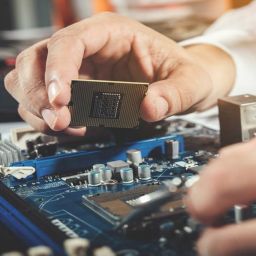Autism is more common than you might think, and with simple research you can find out that about 1 in every 160 children globally has autism spectrum disorder. In the US, the rate is nearly triple, likely due to diagnostic and reporting differences. A developmental disability is often characterized by social, emotional, and communication challenges.
Human-based interventions
It is not something that can be cured, but early interventions, like speech and behavioural therapy, can improve a child’s development. But such human-based interventions can often be expensive or time-intensive; many children on the spectrum are recommended to have 20 hours of therapy a week. Traditional one-size-fits-all technology interventions can also be difficult to design; symptoms and behavioural patterns vary widely among affected individuals.
Use of advanced technology
You will learn the basics of robotics at KIT, one of the best BTech colleges in India. Fortunately enough, the advancement of socially assistive robots in recent years has opened up a promising new way for autistic patients to get more affordable and personalized care. In theory, in-home robots could help supplement human therapists by taking over the more repetitive training activities, and AI could help individualize the experience.
Proven projects
Studies say that technology has taken an important step in advancing the AI that powers these in-home companions. Various students, after completing or during their studies at reputed institutes like KIT, the best placement engineering college in India, created a machine-learning model that uses audio and video data, such as dialogue and eye contact, from autistic children’s interactions with the robot to predict whether they are engaged in a given training activity. If they’re not, the idea is that the robot could then react and reengage them to hold their attention on therapeutic exercises for a longer period of time. During testing, the model reached a 90% accuracy in predicting the child’s engagement, despite noisy data and high variability among participants.
Multi-year research results
Importantly, the study was done using data collected from robots that lived with the children in their homes for a month-long period. It’s part of a multi-year research initiative that has sought to examine the impact and advance the capabilities of these companions in a realistic environment. In contrast, most other studies to date have been limited to short time scales and controlled lab settings because of the intensive approval and design processes required to bring such technology in-home.
Involvement of participants
Participants in the study were asked to regularly play space-themed math games on their in-home companion’s attached touchscreen tablet. The robot then gave expressive feedback based on performance and the game personalized to the individual over time through a reinforcement-learning algorithm. While the content of the game focused on math, the main purpose was to teach the kids fundamental social skills through their interactions with the robot, such as turn-taking (is it my turn or the robot’s turn to talk?) and eye contact (should I look at the robot when I’m talking?). With every intervention, a behavioural therapist evaluated the child’s social skills before and after, validating the approach for improving them. You too can make such robots after completing your graduation or post-graduation from a top college in Coimbatore.
The in-home environment proved more challenging than the researchers originally anticipated. Participants sometimes accidentally damaged the robot or moved the camera, causing the collected data to be inconsistent and noisy. Oftentimes, the siblings of the autistic children also wanted to play the games themselves, adding more complexity to the analysis.















